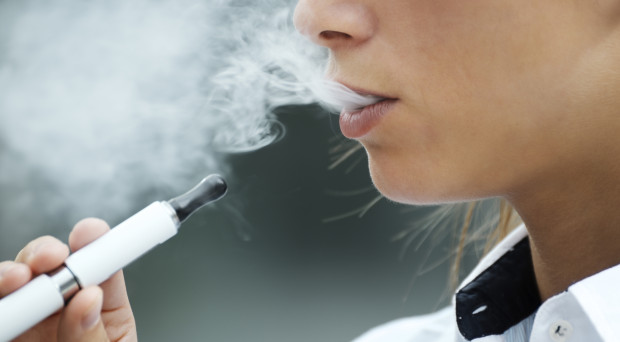
The promise of a reasonable facsimile of the smoking experience minus carcinogenic tar has great potential for weaning smokers off cigarettes. But as data on actual use of e-cigarettes begin to trickle in, both in the U.S. and Europe, a rather different picture is beginning to emerge: that e-cigarettes are, at least for some groups, simply adding a new recreational drug experience to an existing repertoire of risk-taking and addictive behaviors.
Striking the right balance between optimism and caution over e-cigarettes is difficult at this early stage. We know very little about these products (which are continuously evolving), including their long-term health effects and how they are being used by different populations.
The biggest concern is with teenagers. In 2014, the annual Monitoring the Future survey of drug use and attitudes among U.S. middle- and high-school students assessed e-cigarette use for the first time, and the results released in December revealed just how popular these devices have become with that age group: 17.1 percent of 12th graders (17-18 year olds) and 16.2 percent of 10th graders (15-16 year olds) reported e-cigarette use in the month prior to the survey. Further, a fifth of seniors and nearly a third of tenth graders using e-cigarettes had no lifetime cigarette or smokeless tobacco use, thus indicating that these devices are not solely being used by current cigarette smokers as quit aids.
A new study in BMC Public Health shows that the British experience is similar, and provides added insight into the subpopulation of teens liable to take to these products. Of the over 16,000 14–17-year-old school students surveyed in North West England in early 2013, one in five (19.2 %) reported accessing (trying or purchasing) e-cigarettes; of that group, 15.8 percent had never smoked conventional cigarettes.
E-cigarette access was associated not only with conventional cigarette smoking but also with other risky substance-use behaviors including drinking to get drunk and binge drinking.
E-cigarette access was associated not only with conventional cigarette smoking but also with other risky substance-use behaviors including drinking to get drunk and binge drinking, as well as with patterns of avoiding age restrictions to access alcohol. This suggests strongly that e-cigarettes are not being seen or sought by teens as a smoking cessation tool but as a recreational drug in their own right, as part of a pattern of experimentation and other risky behavior.
The authors underscore the urgency in this situation: The longer we wait for stricter controls on these products, the more young people will be exposed to them and want to access them illicitly if and when they are banned for underage use.
Even if e-cigarette vapor proves relatively safe for the lungs compared to cigarette smoke, risks are unlikely to be absent—just diminished. Further, the effects of nicotine on the teen brain warrant a high level of concern. Research in rats indicates nicotine is more rewarding in adolescence than adulthood; and during adolescence (but not adulthood), nicotine upregulates a gene (arc) involved in synaptic plasticity —indicating its enhanced capacity to ‘change the brain’ at this age.
A 2011 mouse study by Eric R. Kandel and colleagues at Columbia University identified an epigenetic pathway that increases sensitivity to cocaine’s rewarding effects following nicotine exposure; if such a mechanism for priming the brain to other drugs’ rewarding effects is also present in humans, then e-cigarettes could indeed be a gateway drug.
One of the biggest questions, which only further research will be able to answer, is whether the 15.8 percent of North West English teens—or the comparable number of American youth—who accessed e-cigarettes but who had never (yet) used conventional cigarettes will go on to try—and enjoy—conventional tobacco products.
The last thing we want to see is for these sleek, shiny, and safe-seeming new devices to re-glamorize smoking behavior and reopen the door to conventional cigarette use in a population that has been consistently using less and less tobacco since the 1990s. That would undo decades of successful prevention efforts and put the health of yet another generation of kids at risk.
I think that, in the end, it comes down to human nature.Ignorance breeds fear and fear breeds bans and restrictions.Much the same happened to witches in medieval England – their cures were not understood by and threatened the medical profession.The public were misinformed and the legal establishment used to eliminate the ‘threat’.
Plus ça change….
“Even if e-cigarette vapor proves relatively safe for the lungs compared to cigarette smoke, risks are unlikely to be absent—just diminished. Further, the effects of nicotine on the teen brain warrant a high level of concern.”
You missed a couple of adverbs to compliment the adjective diminished, namely incredibly and greatly. — ‘cigarette smoke, risks are unlikely to be absent—just incredibly greatly diminished.’
Finally the effects of nicotine on the teen “RAT” brain. Humans and rats are two different and very dissimilar species. Please stop lying Wilson, it makes you look worse that you really are.
I find it odd that most of the UK data (i.e from Wales itself, ASH and most recently CRUK) does not seem to merit any mention. Given that all these data sets show that while experimentation is a valid concern, the rates of regular use remain extremely low, this would seem a rather one-sided interpretation of the data.
I am sure most vapers’ now knows that e-cigarettes are less harmful than the real cigarette. E-cigarettes ain’t no saint so there’s definitely nicotine on some of the juices used to vape it. What I like in these juices was you can customize it, you can have the flavor you want with or without a little drop of nicotine so its up to you.